Black Swallowtail Caterpillars are orange, white and black. The pattern can vary quite a bit so its not easy to describe them. They are usually mostly white with orange spots or stripes and black stripes. Black Swallowtail Caterpillars like to eat Parsley and related plants.
Thursday, July 31, 2014
Black Swallowtail Caterpillar photographs
These are some photographs of Black Swallowtail Caterpillars(Papilio polyxenes). I planted some Parsley plants in my garden. These caterpillars showed up and ate all of the Parsley.
Tuesday, July 29, 2014
Rough Green Snake photographs
These are some photographs of a Rough Green Snake(Opheodrys aestivus). Rough Green Snakes are found in the southern United States mainly between Central Texas and Florida. Rough Green Snakes are arboreal which means they like to climb. You can find these reptiles climbing low vegetation. They are diurnal meaning they tend to hunt during the day and sleep at night. The Rough Green Snake eats small insects and occasionally frogs. These animals are not aggressive and will rarely bite. The Rough Green Snake reaches about 45 inches and it very thin. These snakes are quick and will retreat if confronted.
The difference between a Rough Green Snake and a Smooth Green Snake is mainly that a Rough Green Snake has keeled scales. The Rough Green Snake also gets about 3.5 feet long where the Smooth Green Snake will only get about 2.5.
Here is a photograph of the keeled scales of a Rough Green Snake.
Notice that the scales are not smooth all the way from top to bottom. In the middle of the scales there are a dividing line that is rough to the touch. This is called a keel and is where the reptile gets it's name from.
Both snakes are green on top and yellow on the bottom. This gives excellent camouflage in vegetation. These animals are excellent climbers. This video of a Rough Green Snake shows how well they can climb.
Difference between an Alligator Snapping Turtle and Common Snapping Turtle.
When most people find a snapping turtle they assume its an Alligator Snapping Turtle. In reality Alligator Snapping Turtles are much rarer than Common Snapping Turtles so you are much more likely to find a Common Snapping Turtle. There are some key difference to help you identify whether you have a Common Snapper or an Alligator Snapper.
Alligator Snapping Turtles have a larger head. They also have a beak on the top of the mouth. As you can see in the first photograph below, the Common Snapping Turtle has a small head and a small beak.
Alligator Snapping Turtles have a larger head. They also have a beak on the top of the mouth. As you can see in the first photograph below, the Common Snapping Turtle has a small head and a small beak.
The next picture is the head of an Alligator Snapping Turtle and you can see the head is much larger and the beak is very pronounced. Also around the eye the Alligator Snapping Turtle has growths that almost look like a star.
The Common Snapping Turtle has an almost flat shell with minor bumps. The Alligator Snapping Turtle has sharp protruding spikes on it's back.
Both turtles have tail ridges.
The Alligator Snapping Turtle has a worm like appendage in it's mouth. It uses this to catch small fish which it lures into it's mouth.
Both of these reptiles are found in the same areas. They prefer creeks and small rivers. They can be found in any body of fresh water. The Alligator Snapping Turtle is endangered in some states and it is illegal to keep or kill one from the wild. The Common Snapping Turtle is far more common. Even though they look similar and share common names, the Alligator Snapping Turtle and the Common Snapping Turtle are not closely related.
The Common Snapping Turtle only gets to be around 50 pounds at the extremely high end with most only reaching 20 to 30 pounds. The Alligator Snapping Turtle can get over 200 pounds and is the largest freshwater species.
Both reptiles will eat almost anything they can get. The Common Snapping Turtle will actively forage for food and eat carrion as well as live fish, crayfish and amphibians. The Alligator Snapping Turtle is an ambush predator and will almost never forage for food. They prefer to wait with their mouths open for a fish to swim in. When a fish is within striking distance the Alligator Snapping Turtle will bite with lightning speed.
You should never handle these turtles unless you are careful. Both can deliver a powerful bite that is capable of removing body parts. Never pick the turtles up by their tails as this will hurt the spine and possibly kill the turtle.
This photograph of snapping turtles shows the difference between a Common and Alligator Snapping Turtle.
Here is a video of an Alligator Snapping Turtle.
Poison Ivy
Poison Ivy is a common poisonous plant found throughout the United States. If you are a camper or hiker you have likely run into this plant on more than one occasion. Poison Ivy is not hard to identify even though it does have some resemblance to other no poisonous plants.
The Poison Ivy plant will generally have three leaves. The leaves are jagged with somewhat sharp points. The leaves are a light green to dark green color and will sometimes have red coloring towards the stems.
About 10% of the population has an allergy to the oil found on Poison Ivy. These people will get a rash from the slightest brush of the plant. In as little as a few hours or up to a week later, the skin will begin to itch and there will be small red bumps or in severe cases large puss filled blisters.
In less severe cases normally you will just have to wait out the reaction. Using several types of cream can help with the itching. Contrary to popular belief, scratching doesn't normally spread the rash. If you still have oil on your fingers or body it could spread the rash, but the rash itself and the liquid inside the rash can not spread.
The Poison Ivy plant will generally have three leaves. The leaves are jagged with somewhat sharp points. The leaves are a light green to dark green color and will sometimes have red coloring towards the stems.
About 10% of the population has an allergy to the oil found on Poison Ivy. These people will get a rash from the slightest brush of the plant. In as little as a few hours or up to a week later, the skin will begin to itch and there will be small red bumps or in severe cases large puss filled blisters.
In less severe cases normally you will just have to wait out the reaction. Using several types of cream can help with the itching. Contrary to popular belief, scratching doesn't normally spread the rash. If you still have oil on your fingers or body it could spread the rash, but the rash itself and the liquid inside the rash can not spread.
Tiger Salamander photographs
These are some photographs of Tiger Salamanders. These medium sized amphibians make really good pets. They are easy to take care of and will live many years with proper care. Tiger Salamanders are yellow and black. There are several subspecies of Tiger Salamanders. The pattern for these amphibians can vary depending on the species and even between the same species. Tiger Salamanders are amphibians which mean they are cold blooded animals. Tiger Salamanders need the sun to warm up.
Tiger Salamanders start there lives in a larva stage which they will remain in for several months. At this time they are completely dependent on water. After they change to the adult form, they require water only to remain moist.
Tiger Salamanders will eat insects and occasionally small mammals such as mice. These animals are nocturnal and spend most of the day hidden underground. At night they hunt for small prey.
I took these photographs of Tiger Salamanders using a Canon 5D Mark II camera and a Sigma 180mm macro lens. For lighting I used an Alien Bee flash and a large octobox.
If you would like to license any of these photographs please email me at producttester999@gmail.com
Tiger Salamanders start there lives in a larva stage which they will remain in for several months. At this time they are completely dependent on water. After they change to the adult form, they require water only to remain moist.
Tiger Salamanders will eat insects and occasionally small mammals such as mice. These animals are nocturnal and spend most of the day hidden underground. At night they hunt for small prey.
I took these photographs of Tiger Salamanders using a Canon 5D Mark II camera and a Sigma 180mm macro lens. For lighting I used an Alien Bee flash and a large octobox.
This is a video of my Tiger Salamanders and some turtles feeding.
If you would like to license any of these photographs please email me at producttester999@gmail.com
Yellow Jacket photographs
These are some photographs of Yellow Jackets. I found these Yellow Jacket Wasp under a log on a cold morning in spring. These wasp, just like most other insects, slow down and cant fly during the colder days. I was able to get these macro photographs of Yellow Jackets without any problems because the insects were cold and couldn't fly.
I shot these macro photographs of Yellow Jackets on my Canon 5D Mark II using a Canon MP-E 65mm 1x-5x macro lens and a Canon MT-24EX flahs unit.
Yellow Jackets are predatory insects that feed on necture, other insects and meat. They live in colonies and will fiercly defend their nest. Generally holes in the ground, bushes and other protected areas are used for nesting. Yellow Jackets are mostly harmless to humans except for a painful sting. Only people allergic have anything to fear.
These are some macro videos I took of Yellow Jacket Wasp.
If you would like to license the use of any of these photographs or videos email me at productester999@gmail.com
I shot these macro photographs of Yellow Jackets on my Canon 5D Mark II using a Canon MP-E 65mm 1x-5x macro lens and a Canon MT-24EX flahs unit.
Yellow Jackets are predatory insects that feed on necture, other insects and meat. They live in colonies and will fiercly defend their nest. Generally holes in the ground, bushes and other protected areas are used for nesting. Yellow Jackets are mostly harmless to humans except for a painful sting. Only people allergic have anything to fear.
These are some macro videos I took of Yellow Jacket Wasp.
If you would like to license the use of any of these photographs or videos email me at productester999@gmail.com
Jumping Spider photographs
These are some macro photographs of jumping spiders. Jumping Spiders are very common throughout the world. These small arachnids are named because they are quick and like to jump to capture prey and escape danger. Jumping spiders come in many different sizes colors and shapes. Jumping spiders have incredible eyesight and are very alert. These arachnids hunt by sight. When one of these spiders sees movement they will generally turn towards the movement or sometimes shy away if they sense danger.
Jumping spiders are mostly harmless to humans. Most are not aggressive and will not bite unless harassed. You can handle most jumping spiders without fear of being bitten.
I dont not know what exact species most of these are. I took these macro photographs of jumping spiders in Texas. Some were found in Austin, Dallas and Fort Worth.
I shot these pictures on a Canon 5D Mark II with either a Sigma 180mm or a Canon MP-E 65mm 1x-5x lens.
My favorite photographs are the first three where the jumping spider is on some pink colored flowers called Red Yucca. The jumping spider had actually caught another jumping spider and was eating it. I got a few photographs before the jumping spider got scared and dropped his meal. This was my first time to see a jumping spider eating another spider.
Jumping spiders are mostly harmless to humans. Most are not aggressive and will not bite unless harassed. You can handle most jumping spiders without fear of being bitten.
I dont not know what exact species most of these are. I took these macro photographs of jumping spiders in Texas. Some were found in Austin, Dallas and Fort Worth.
I shot these pictures on a Canon 5D Mark II with either a Sigma 180mm or a Canon MP-E 65mm 1x-5x lens.
My favorite photographs are the first three where the jumping spider is on some pink colored flowers called Red Yucca. The jumping spider had actually caught another jumping spider and was eating it. I got a few photographs before the jumping spider got scared and dropped his meal. This was my first time to see a jumping spider eating another spider.
I shot these three photographs of jumping spider in Farmers Branch Texas in Gussie / Waterworth Park. Every year the park is full of flowers and roses. I usually find a lot of insects to photograph in this park. This was the first time I have seen a jumping spider eating another spider.
These are some videos I have taken of jumping spiders.
Monday, July 28, 2014
Water Drop photographs
These are some water drop photographs I shot in 2012 or 2013. most of he water drops were staged using a spray bottle or a ziplock with a hole. The flowers were at Gussie park in Farmers Branch Texas just outside of Dallas.
I used a Canon Mark 5D II camera with a Canon MP-E 65mm 1x-5x macro lens. This lens will capture extremely close shots.
These are some of my favorite water drop shots. I have done quite a few.
I used a Canon Mark 5D II camera with a Canon MP-E 65mm 1x-5x macro lens. This lens will capture extremely close shots.
These are some of my favorite water drop shots. I have done quite a few.
Butterflies in the Garden - Fort Worth Botanical Gardens
Butterflies in the Garden at Fort Worth Botanical Gardens. These photographs of butterflies were taken at the Fort Worth Botanical Garden exhibit called Butterflies in the Garden in 2013. Every year the Fort Worth Botanical Gardens host a wide range of butterflies in early spring.
These photographs of butterflies were taken on a Canon 5D Mark II camera using a Canon MT-24EX twin flash and a Sigma 180mm macro lens. There were a lot of beautiful butterflies in the exhibit. My family spent about an hour looking at and filming the butterflies. I don’t remember how many there were but I would guess around 30 different species.
If you would like to license the use of any of these photograph contact me at producttester999@gmail.com
These photographs of butterflies were taken on a Canon 5D Mark II camera using a Canon MT-24EX twin flash and a Sigma 180mm macro lens. There were a lot of beautiful butterflies in the exhibit. My family spent about an hour looking at and filming the butterflies. I don’t remember how many there were but I would guess around 30 different species.
If you would like to license the use of any of these photograph contact me at producttester999@gmail.com
Striped Bark Scorpion
These are some photographs of a Striped Bark Scorpion. The Striped Bark Scorpion(Centruroides vittatus) is one of the most common scorpions found in the United States. These scorpions are mostly harmless except for a painful sting. Very rarely death can occur mostly in individuals that are highly allergic. Most stings occur by accident when someone steps on a scorpion. Scorpions like to hide in dark places so a shoe left outside becomes a good hiding spot for a scorpion. Striped Bark Scorpions are tan to light brown with two dark brown strips running down there back. These arachnids live mostly in desert or arid land. They can be found under rocks and debris during the day. At night Striped Bark Scorpions forage for food. These arachnid feed on small insects and other arachnids. Striped Bark Scorpions are found from northern Mexico through Texas and up to Nebraska.
These photographs of Striped Bark Scorpions were shot outside Austin Texas. I found the scorpion under a rock while I was hunting for things to photograph. They are quite common in this area. These photographs were shot on a Canon 5D Mark II using a Sigma 180mm macro lens. For lighting I use a Canon MT-24EX twin flash.
These are some videos of a Striped Bark Scorpion. In the first video you can see it is a female with baby scorpions on its back.
The second video is a Striped Bark Scorpion crawling on the ground.
If you would like to license any of these photographs or video contact me at producttester999@gmail.com
These photographs of Striped Bark Scorpions were shot outside Austin Texas. I found the scorpion under a rock while I was hunting for things to photograph. They are quite common in this area. These photographs were shot on a Canon 5D Mark II using a Sigma 180mm macro lens. For lighting I use a Canon MT-24EX twin flash.
These are some videos of a Striped Bark Scorpion. In the first video you can see it is a female with baby scorpions on its back.
The second video is a Striped Bark Scorpion crawling on the ground.
If you would like to license any of these photographs or video contact me at producttester999@gmail.com















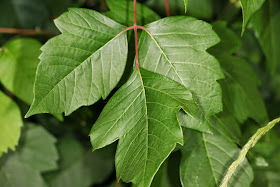
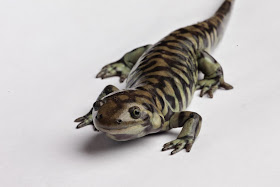

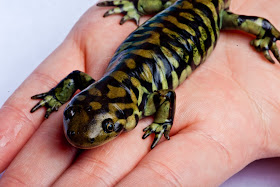
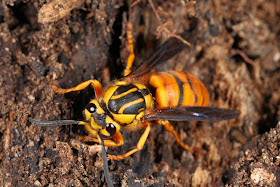

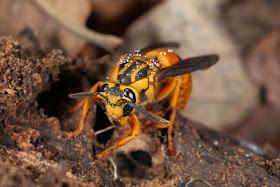
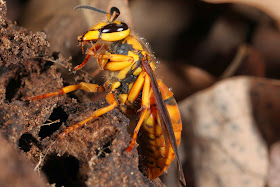



















.JPG)


.jpg)
.jpg)







